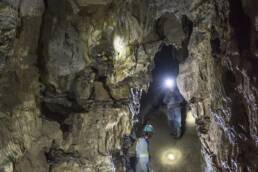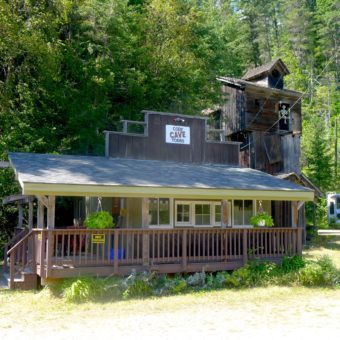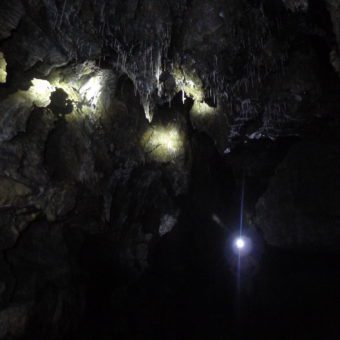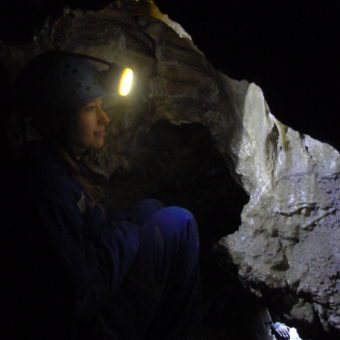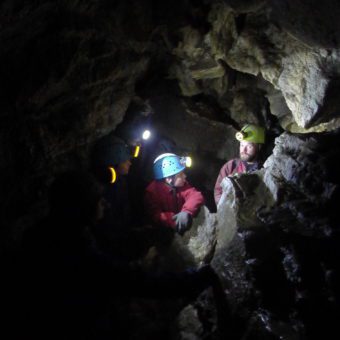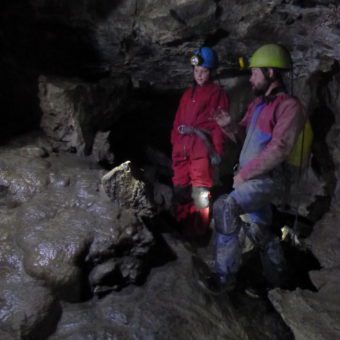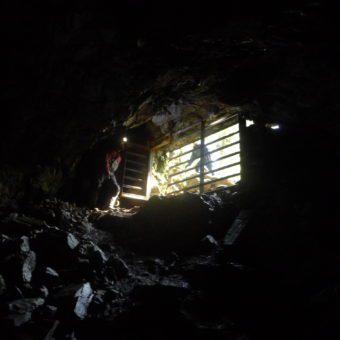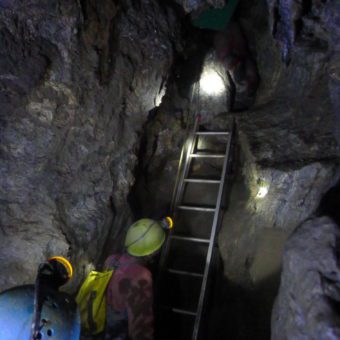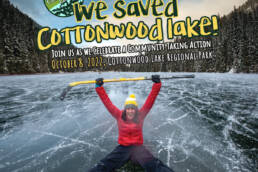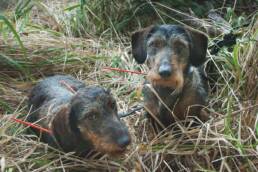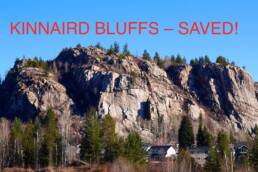They’re dark, dank and older than the hills. Who wants to save a big ol’ hole in the ground? The Cody Cves crew, that’s who. Bobbi Barbarich dives in.
It’s understandable that someone utterly focused on mountaintop adventures in the Kootenays may be oblivious to what lurks within that mountain, beneath the board or tire. But a passionate spelunker would quickly inform you that what happens above ground is strongly connected to what goes on down below.
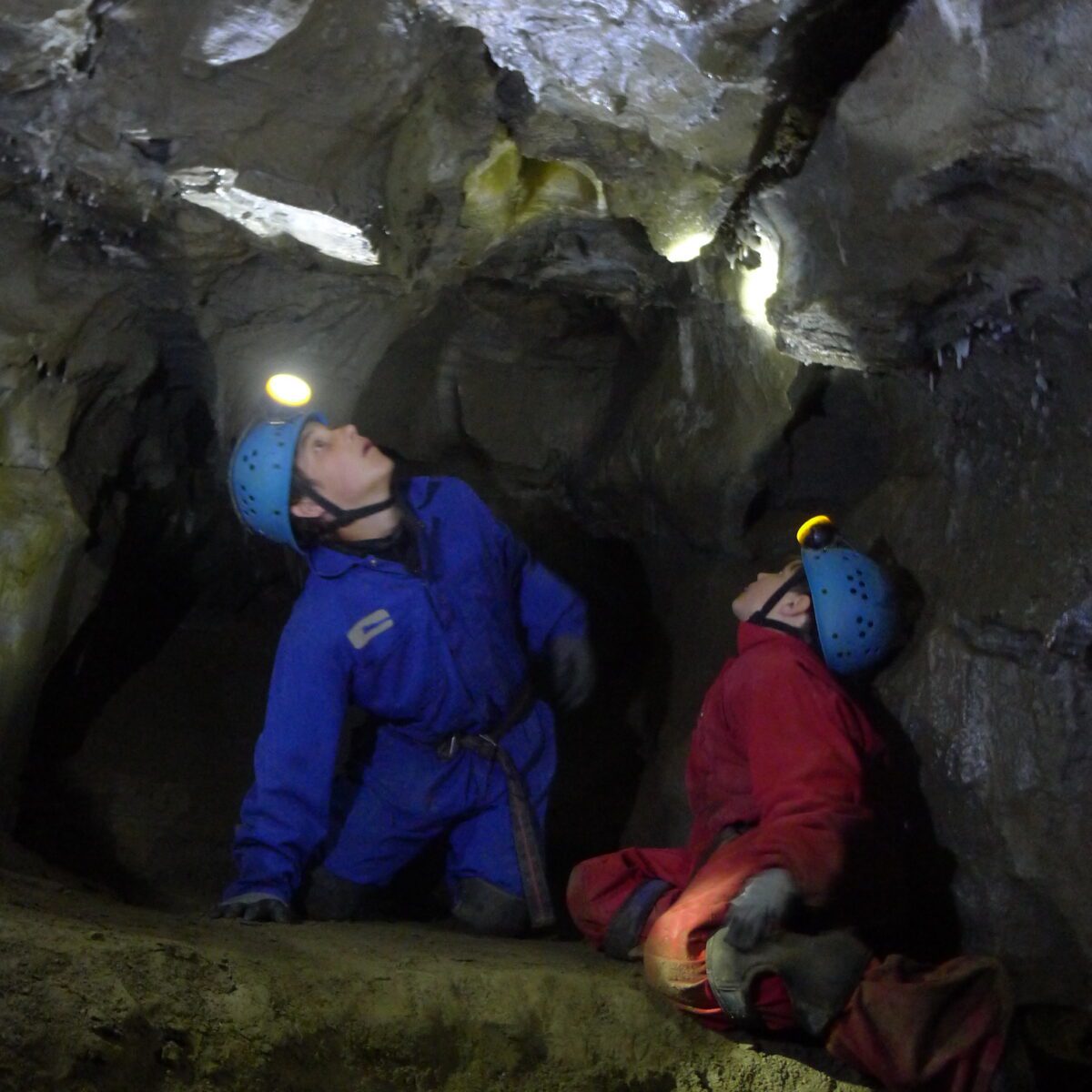
A few kilometres up an indistinguishable forestry service road off Highway 31 near Ainsworth Hot Springs hides British Columbia’s best-known limestone cave system. Despite this esteem, locals comprise fewer than 10 per cent of Cody Cave’s annual visitor tally of over 1,600 people. The caves were first discovered by silver miner Henry Cody in the 1890s, and in 1966, were granted provincial-park status—the first subterranean park in the province. “Cody’s famous with cavers probably because it’s accessible,” explains Cody Caves tour operator Lee Hollis. “Most caves have multi-day approaches, whereas we drive up a road.” The cave boasts 1,400 metres (4,600 feet) of walkable underground passages, where calcite formations reflect the area’s ancient geological and climatic history.

Cave tours stopped in 2010 when the province imposed a visitor tax that then-tour operator Kevin Stanway would not comply with, and the area returned to obscurity until 2013, when Hollis and his enthusiastic crew of employees and volunteers took over operations. But the cave was again threatened when forestry company Cooper Creek Cedar put in a bid to log the area containing the cave’s headwaters, situated just beyond the 63-hectare park boundary. “Removing trees shifts water flow,” says cave guide Kale Phoenix. As it drips through the limestone, surface water sculpts cave formations. “Logging creates silt, which fills the holes that lead to the headwaters feeding the cave,” explains Phoenix, “and a cave without a water source essentially dies.”
Hollis and his crew were justifiably worried logging would kill Cody Caves. But with advocacy from Friends of West Kootenay Parks, Cooper Creek agreed to establish their logging boundaries away from the 14-hectare headwater area. It is also supporting fundraising efforts for signage on a new 1.4-kilometre interpretive tourism trail around the cave, which is slated to open this summer, and Cody Caves Tours hopes this lures more surface dwellers into the depths.
Related Stories
“We Saved Cottonwood Lake” Celebration
The Cottonwood Lake Preservation Society is holding an event October 8, 2022 to celebrate saving the regional park from…
How Weiner Dogs Saved Haida Gwaii
Fifteen years ago, dachshunds and biologists teamed up to save Haida Gwaii from invasive species. This is what happens…
Exclusive – Kinnaird Bluffs Rock Climbing Area Saved!
The Mountain Culture Group has just learned that the Kinnaird Bluffs rock climbing area in Castlegar, British Columbia,…
Should Big Mountain Jesus Be Saved?
After 60-some years watching over his freeridin' flock, it looked as though the "Big Mountain Jesus" statue at…
Nelson, BC Residents Trying to Stop Cottonwood Logging
Emergency public meeting called in effort to save Nelson’s Cottonwood Slopes from logging. A growing number of…


